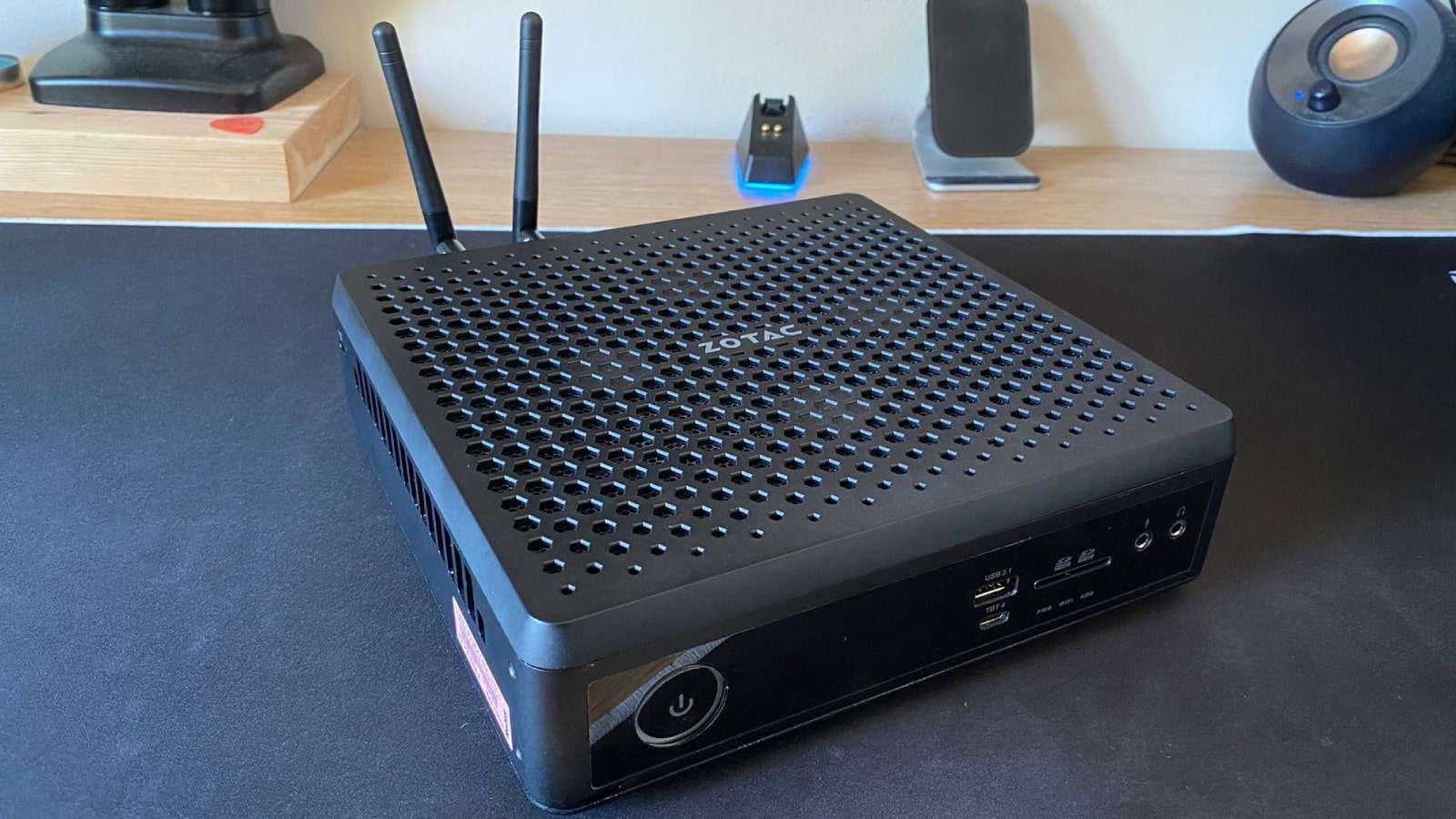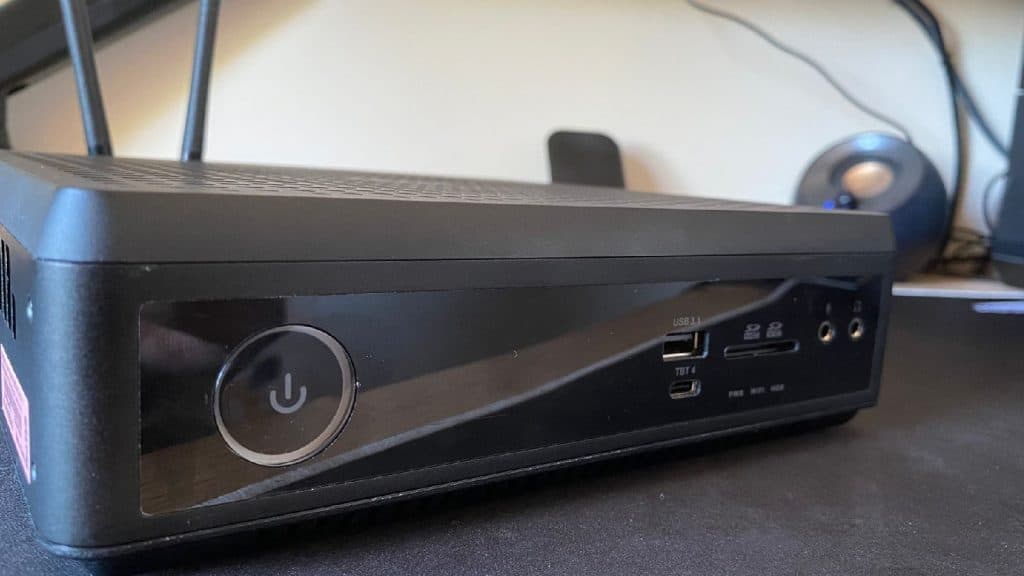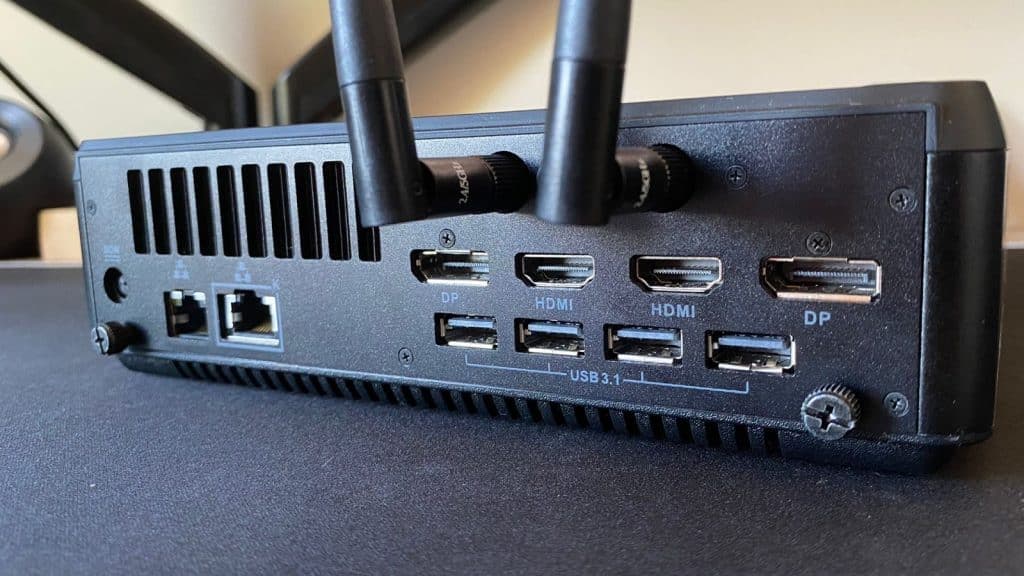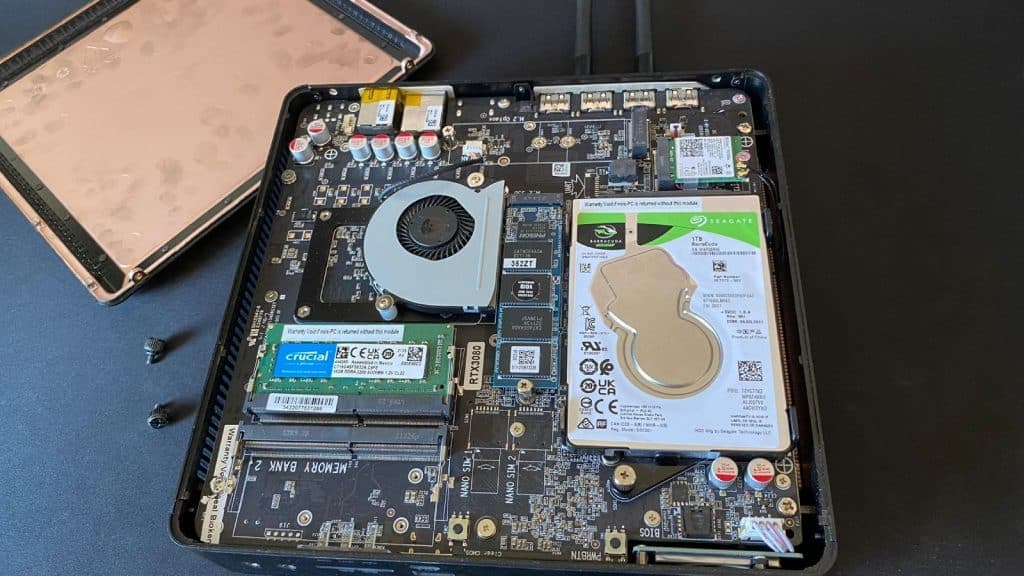Zotac Magnus ZBOX review: A small and mighty mini PC
 Dexerto
DexertoThe Zotac Magnus ZBOX is a tiny PC, packed in with heaps of performance under an incredibly low-profile form factor. But, will this 3080-equipped Mini PC actually manage to deliver?
PCs are getting smaller. ATX case sizes are relatively uncommon in 2022, with the de-facto standard becoming a more compressed mid-tower system. However, in the tech industry, a revolution is happening. ITX PCs, and small form factor (SFF) PCs are growing in popularity, due to their size, and promises in performance.
To this end, Zotac created the ZBOX, which has been refreshed this year to include a powerful 11th-gen processor, in addition to the latest GeForce RTX graphics cards as a barebones kit, that you can trick out with additional RAM and storage if necessary. We took a look at the Magnus EN173080C, to see if this portable powerhouse actually manages to deliver.
Key specs
- CPU: Intel Core i7-11800H (8-core)
- CPU clock: 2.3GHz – 4.6GHz)
- GPU: Nvidia GeForce RTX 3080 Laptop GPU (16GB GDDR6)
- Memory slots: 2x DDR4-3200 / 29333 SODIMM slots (up to 64GB capacity)
- 1x M.2 PCIe 4.0 x 4 slot
- 1x M.2 PCIe 3.0 x 4 slot
- I/O: 5x USB 3.1 Gen 2, 2x Ethernet ports, WiFi 6, Bluetooth 5, 1x Thunderbolt 4 (Data only), Card reader
- Price: £2,109.99
- Where to buy: Ebuyer
Design
 Dexerto
DexertoThe Zotac Magnus ZBOX comes in a rather understated plastic shell, which is well-equipped for heaps of ventilation, should you require it. The sides and back of the case are lined with grills that exhaust hot air out of the system while under load. The top of the device is adorned with a honeycombed lattice, with a dust filter underneath. This is how the machine breathes and gets fresh air, so you shouldn’t be tempted to cover it up.
The front of the device possesses a heavy black, glossy finish, with a hard power button that shines an LED when the device is in use. On the front, you’ll also find a single USB-A port, in addition to a Thunderbolt 4 port, which is disappointingly data-only.
 Dexerto
DexertoThe size of this system is remarkable, considering the amount of power under the hood, and also the amount of I/O you get around the back. It would make for a smart solution for those looking for a powerful desktop, with a lower profile than most.
Performance
 Dexerto
DexertoThe unit we tested came with 16GB of SODIMM memory, and you might notice that the Zotac Magnus ZBOX does not use desktop-class parts. Instead, it uses laptop components in a slim, desktop form factor. Since this is a barebones kit, you will need to bring your own RAM and storage, in addition to having to install Windows for yourself.
Upon booting the device, we were met with a fairly aggressive fan curve, which is fairly high-pitched. Idle temperatures sit at around 15 degrees celsius over ambient, which is not fantastic. When under slight loads, this boosts to around 35 degrees over ambient, with the fans buzzing away, all the while. It’s not louder than our deep-sounding PC, but it certainly is slightly more annoying in general use.
We tested the Zotac Magnus ZBOX in a number of testing scenarios, including synthetic benches, games and tested it against our office PC.
Test system specs
- CPU: AMD Ryzen 5 3600
- GPU: Nvidia RTX 3080 Founders Edition
- RAM: XPG Gammix D45 (16GB, 3600MHz)
- Motherboard: NZXT N7 B550
- Cooler: Cooler Master Masterliquid PL360 FLUX
- Case: Lian Li Lancool II Mesh
- Power Supply: Corsair RM850x
3DMark performance
We tested the Zotac Magnus ZBOX in two different synthetic benchmarks, Time Spy Extreme, a 4K gaming benchmark, and Port Royal, a ray-tracing benchmark to see just how the high-end internal parts in the system manage to stack up against a full-fat desktop PC.
| Zotac Magnus ZBOX | Test System | |
| Time Spy Extreme (Overall) | 5177 | 6890 |
| Time Spy Extreme (Graphics Score) | 5676 | 8644 |
| Time Spy Extreme (CPU score) | 3285 | 3205 |
| Port Royal | 6946 | 10913 |
In these synthetic benches, the system managed to put in a respectable performance, with the mobile version of the RTX 3080 actually performing a little bit more like a desktop-class 3060 Ti. This is nothing too unexpected, as they are two very different cards and chips. You still get adequate Ray Traced performance, as demonstrated in Port Royal.
However, the big caveat is the temperatures that we saw on the system while running these benchmarks. The irritating fan noises were back, and you now soaring temperatures reaching 90 degrees on the CPU, and 92 degrees on the GPU.
This is with both of these components under maximum load, and while yes, the Zotac Magnus ZBOX is small, it is also loud, and very hot. This causes the clocks of both the Core i7-11800H and the mobile RTX 3080 to throttle, and therefore perform slightly worse than they would if they were given a little bit more air.
Gaming performance
The Zotac Magnus ZBOX manages to position itself quite uniquely. It effectively performs at around the same level as a mid-tier gaming PC, but in a smaller form factor. We tested the PC in various workloads, including Halo Infinite, CS:GO, and Cyberpunk 2077.
| Zotac Magnus ZBOX | Test System | |
| Halo Infinite (1440p, Ultra) | 86 FPS (Average) | 132 FPS (Average) |
| CS:GO (1440p, High) | 287 FPS (Average) | 294 FPS (Average) |
| Cyberpunk 2077 (1440p, Ultra, RT Ultra, DLSS Balanced) | 43 FPS (Average) | 65 FPS (Average) |
While heavier titles like Cyberpunk 2077 certainly were more difficult to run, you can easily achieve a solid 60 FPS in-game if you tuned the settings down on the device a little bit. It’s a potent performer at 1440p, though we reckon that you might not want to play heavier games at 4K, where you will not get the best performance.
In CS:GO, we suspect that the machine was bottlenecked on both systems by their respective CPUs, hence their relatively similar results.
When playing Halo Infinite, the system struggled a bit, and we saw heaps of screen tearing with the unlocked framerate, meaning that you might want to pick up a G-Sync or Freesync monitor to go along with the system.
Against our test system, the Zotac Magnus ZBOX managed to achieve really respectable results, especially considering its form factor. It did reach up to 92 degrees when we were hammering the system on Cyberpunk 2077, and the fans are quite loud, so headphones are necessary if you are placing this near you on a desk.
Should you buy it?
Coming in at a fairly dear price, you might be sucked into the allure of the Zotac Magnus ZBOX for all of its portability, but you are not going to be getting any storage or RAM, meaning that you will pay a premium for what is a fairly warm and noisy machine. Otherwise, it’s very accomplished with its performance, and if you choose to buy one, you certainly won’t be disappointed with its performance in most modern titles at around 1440p.
7/10
If you click on a product link on this page we may earn a small affiliate commission.